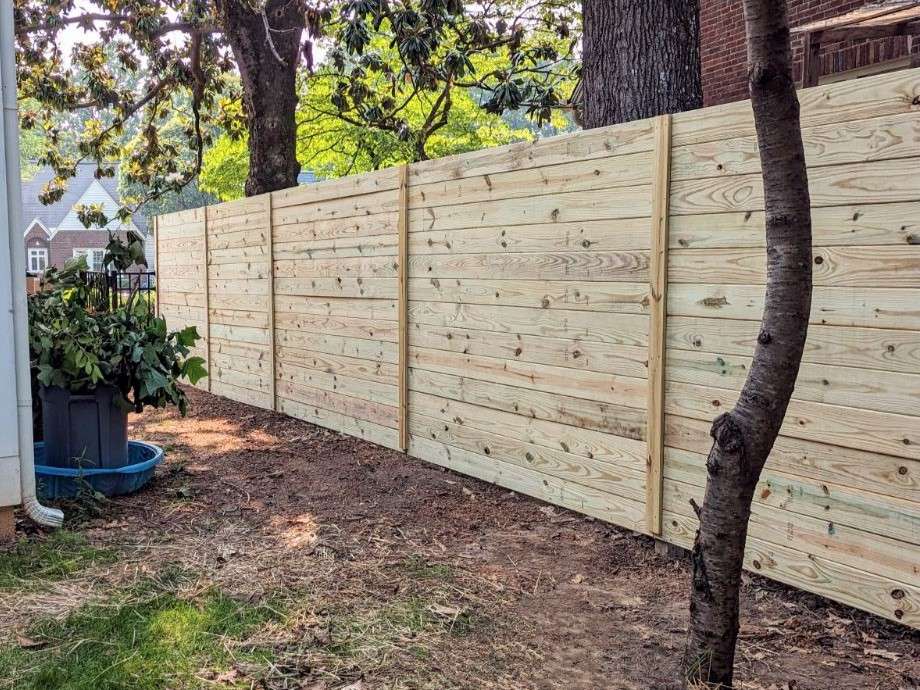All Categories
Featured
Setting up a fencing on your residential or commercial property can add personal privacy, security, and visual charm, yet before you begin digging holes and establishing articles, it's important to understand whether you need an authorization. The kind of fencing you plan to install, where it will certainly be positioned, and local zoning legislations can all affect the allowing process. Not getting the essential authorizations could lead to fines or the demand to remove the fence. Below's what you require to know to make sure a smooth installment procedure.
Why Are Allows Necessary for Fence Installation? Permits are essential for ensuring that your fencing abides by local zoning legislations and building ordinance. These regulations aid guarantee the security of your residential or commercial property and the surrounding area. Furthermore, permits avoid disagreements with neighbors or neighborhood authorities, particularly when it involves residential or commercial property lines, height restrictions, and total design.
In a lot of cases, regional authorities require permits to manage things like presence at junctions or the proximity of a fencing to public rooms like pathways or roadways. Permits also aid make certain that fencings are installed appropriately and securely, particularly when it comes to one-of-a-kind products or high fences.
Usual Sorts Of Licenses for Fencing Installment. The type of fencing you wish to mount and your place will determine which authorizations are called for. Right here are the most typical types:
Building Authorization. A building authorization is generally required for fencings that exceed specific elevation restrictions (frequently over 6 feet), are situated near a public roadway or sidewalk, or are made from certain products. Structure permits make sure that the structure meets local building ordinance, including security standards.
Zoning Authorization. Zoning licenses are frequently called for to ensure that your fencing abides with neighborhood zoning legislations. Zoning legislations can specify where a fencing can be positioned on your residential or commercial property (e.g., along residential or commercial property lines or ahead lawns), as well as established limits on fencing elevation. These regulations are developed to stop blockages that might impact web traffic security or neighborhood visual appeals.
![]()
Problem Permit. In some locations, you may need an obstacle authorization to position your fencing a specific distance from property energies, lines, or roads. Obstacles are intended to preserve proper space between structures and property boundaries, decreasing potential disputes with next-door neighbors or public infrastructure.
Homeowners Organization (HOA) Approval. You will likely need approval from the HOA before setting up a fence if your residential or commercial property is component of an area regulated by a Homeowners Association (HOA) HOA guidelines frequently govern the design, elevation, products, and also shade of fences, ensuring that they match the overall visual of the neighborhood.
The Process for Getting a Fencing Permit. To acquire a fencing authorization, you commonly require to call your neighborhood city or region workplace. Most locations have a structure department or preparation workplace where you can get authorizations. The procedure involves finishing an application and giving in-depth info about your suggested fence, including:
Fencing layout (products, elevation, design) Place on the property. Building line details (for accurate positioning) In most cases, a website plan revealing the recommended fence's position will certainly be called for. You may likewise require to pay an authorization fee, which can differ based on location and the intricacy of the job.
Once you submit your application, the regional authorities will examine it to ensure the fence abides with neighborhood regulations. Depending upon your location, you may also require to permit or set up an evaluation for a residential or commercial property survey.
When Do You Not Need a License? In many cases, a permit may not be called for. Usually, you may not need a permit if:
![]()
The fencing is under a specific height (frequently 3-4 feet for front backyards) You're changing an existing fence with the exact same type and elevation. The fencing is momentary (such as a yard fence) It's constantly a good concept to inspect with your regional structure or zoning department to confirm the requirements, as policies can differ.
Consequences of Not Obtaining a Permit. Failing to get the necessary permits can result in various issues. The most typical consequence is being fined or asked to eliminate the fence. In many cases, you may need to re-install the fence according to code, which could be time-consuming and pricey. Additionally, not following the appropriate permitting process can produce problems with next-door neighbors, especially if your fencing prolongs past your residential or commercial property line or does not fulfill height or design requirements.
Final thought. Prior to mounting a fencing, make certain you're aware of the regional regulations and whether you require a permit. It is essential to talk to your local structure or zoning workplace, as well as your HOA if suitable, to comprehend what's required. By getting the right licenses, you'll make sure that your fencing is legally certified, safe, and without future problems. Taking this extra action will save you money and time in the long run while offering peace of mind that your project gets on the appropriate track.
Why Are Allows Necessary for Fence Installation? Permits are essential for ensuring that your fencing abides by local zoning legislations and building ordinance. These regulations aid guarantee the security of your residential or commercial property and the surrounding area. Furthermore, permits avoid disagreements with neighbors or neighborhood authorities, particularly when it involves residential or commercial property lines, height restrictions, and total design.
In a lot of cases, regional authorities require permits to manage things like presence at junctions or the proximity of a fencing to public rooms like pathways or roadways. Permits also aid make certain that fencings are installed appropriately and securely, particularly when it comes to one-of-a-kind products or high fences.
Usual Sorts Of Licenses for Fencing Installment. The type of fencing you wish to mount and your place will determine which authorizations are called for. Right here are the most typical types:
Building Authorization. A building authorization is generally required for fencings that exceed specific elevation restrictions (frequently over 6 feet), are situated near a public roadway or sidewalk, or are made from certain products. Structure permits make sure that the structure meets local building ordinance, including security standards.
Zoning Authorization. Zoning licenses are frequently called for to ensure that your fencing abides with neighborhood zoning legislations. Zoning legislations can specify where a fencing can be positioned on your residential or commercial property (e.g., along residential or commercial property lines or ahead lawns), as well as established limits on fencing elevation. These regulations are developed to stop blockages that might impact web traffic security or neighborhood visual appeals.

Problem Permit. In some locations, you may need an obstacle authorization to position your fencing a specific distance from property energies, lines, or roads. Obstacles are intended to preserve proper space between structures and property boundaries, decreasing potential disputes with next-door neighbors or public infrastructure.
Homeowners Organization (HOA) Approval. You will likely need approval from the HOA before setting up a fence if your residential or commercial property is component of an area regulated by a Homeowners Association (HOA) HOA guidelines frequently govern the design, elevation, products, and also shade of fences, ensuring that they match the overall visual of the neighborhood.
The Process for Getting a Fencing Permit. To acquire a fencing authorization, you commonly require to call your neighborhood city or region workplace. Most locations have a structure department or preparation workplace where you can get authorizations. The procedure involves finishing an application and giving in-depth info about your suggested fence, including:
Fencing layout (products, elevation, design) Place on the property. Building line details (for accurate positioning) In most cases, a website plan revealing the recommended fence's position will certainly be called for. You may likewise require to pay an authorization fee, which can differ based on location and the intricacy of the job.
Once you submit your application, the regional authorities will examine it to ensure the fence abides with neighborhood regulations. Depending upon your location, you may also require to permit or set up an evaluation for a residential or commercial property survey.
When Do You Not Need a License? In many cases, a permit may not be called for. Usually, you may not need a permit if:

The fencing is under a specific height (frequently 3-4 feet for front backyards) You're changing an existing fence with the exact same type and elevation. The fencing is momentary (such as a yard fence) It's constantly a good concept to inspect with your regional structure or zoning department to confirm the requirements, as policies can differ.
Consequences of Not Obtaining a Permit. Failing to get the necessary permits can result in various issues. The most typical consequence is being fined or asked to eliminate the fence. In many cases, you may need to re-install the fence according to code, which could be time-consuming and pricey. Additionally, not following the appropriate permitting process can produce problems with next-door neighbors, especially if your fencing prolongs past your residential or commercial property line or does not fulfill height or design requirements.
Final thought. Prior to mounting a fencing, make certain you're aware of the regional regulations and whether you require a permit. It is essential to talk to your local structure or zoning workplace, as well as your HOA if suitable, to comprehend what's required. By getting the right licenses, you'll make sure that your fencing is legally certified, safe, and without future problems. Taking this extra action will save you money and time in the long run while offering peace of mind that your project gets on the appropriate track.
Latest Posts
Benefits of NAPA AutoCare? Montclare Auto Repair Delivers the Best Service
Published Apr 20, 25
2 min read
Protect Your Future with WyHy's Unique Certificate Options
Published Apr 20, 25
1 min read
Protect Your Building with Washington Fence's Costs Products
Published Apr 20, 25
1 min read
More
Latest Posts
Benefits of NAPA AutoCare? Montclare Auto Repair Delivers the Best Service
Published Apr 20, 25
2 min read
Protect Your Future with WyHy's Unique Certificate Options
Published Apr 20, 25
1 min read
Protect Your Building with Washington Fence's Costs Products
Published Apr 20, 25
1 min read